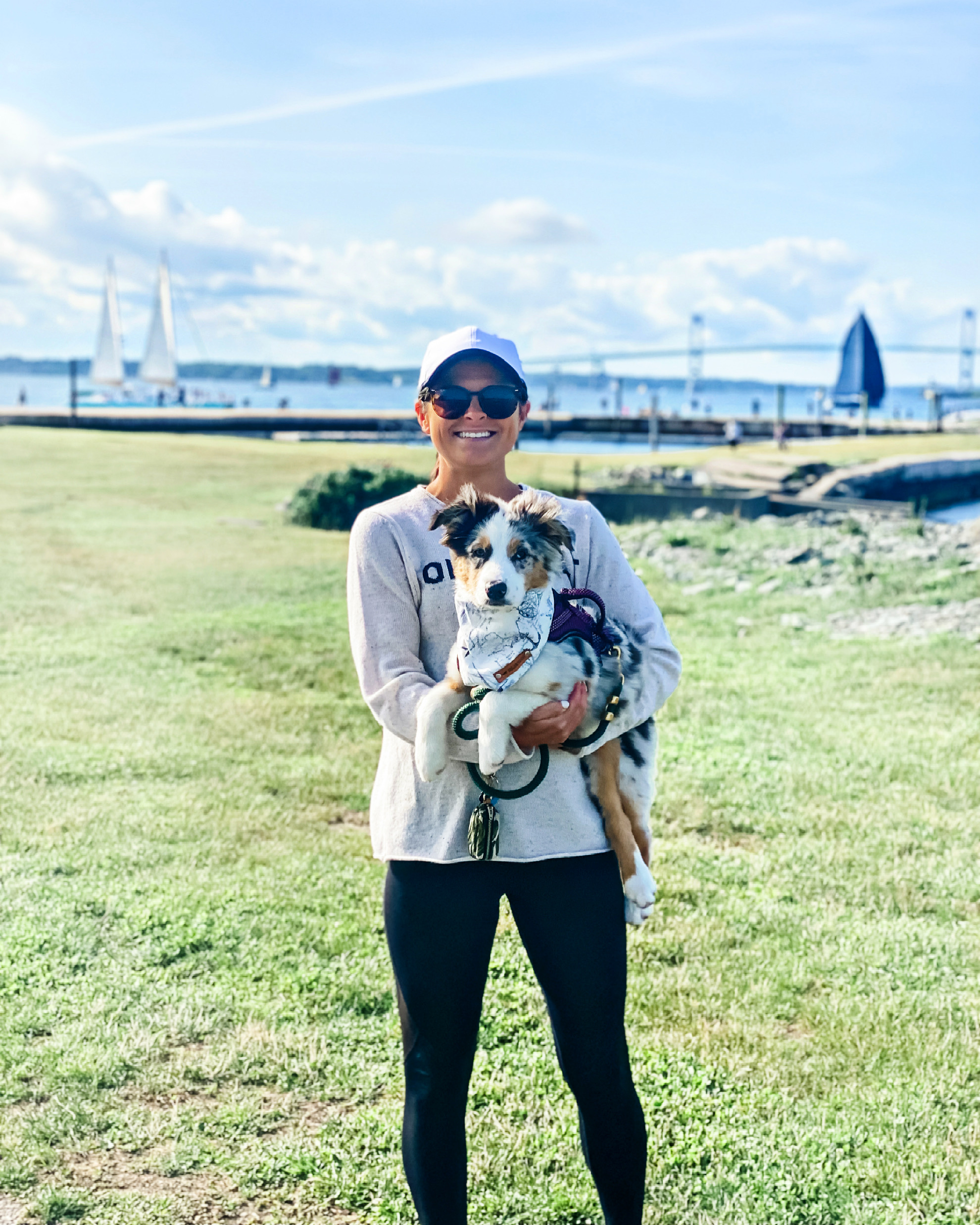 I can’t believe our lil Levi is already 6 months old! She was born February 5th of this year & we welcomed her to our home late March, after waiting close to a full year since placing our deposit for her. Like all new additions to a household, these past 4 months have been full of amazing highs and defeating lows – and lots of frustration in-between that comes with any lifestyle adjustment. But I can’t imagine my life without her now & absolutely adore every strand of hair on her precious, soft furry head. Through all the ups & downs, becoming a dog mom has been a dream come true for me & I’m so excited for all that’s to come with raising our incredible girl.
I can’t believe our lil Levi is already 6 months old! She was born February 5th of this year & we welcomed her to our home late March, after waiting close to a full year since placing our deposit for her. Like all new additions to a household, these past 4 months have been full of amazing highs and defeating lows – and lots of frustration in-between that comes with any lifestyle adjustment. But I can’t imagine my life without her now & absolutely adore every strand of hair on her precious, soft furry head. Through all the ups & downs, becoming a dog mom has been a dream come true for me & I’m so excited for all that’s to come with raising our incredible girl.
Compared to my first post detailing our then routine with an 8-week old puppy, a couple things have changed with the day-to-day as she’s gotten older. Don’t get me wrong, everything we did at the time she was a baby puppy has led to a very great outcome in terms of how well-adjusted she is now at 6 months old. But naturally like all kids, they eventually grow up & their schedules adapt to those changes along with them. Although Thomas & I grew up with dogs our entire lives, Levi is our first full responsibility in terms of raising a dog from puppy to adulthood – our parents aren’t doing all the work anymore lol. We’re not experts by any means but we continue to learn and do our research and with trial & error, have found certain things to work better for us than other methods of training a high-energy breed.
That being said, please interpret the below as a shared suggestion, not as a guide to raising a young dog. We’re only in the earliest stages of puppy parenthood and there’s tons more we’ll endure & learn as Levi grows up. Every dog is different and what works for some won’t be beneficial to all. This is simply a personal experience regarding our individual dog’s routine, taking her personality, her breed & our lifestyle into account for the decisions & actions made on her behalf.
Daily Routine + Meal Schedule
Levi wakes up at 6:30AM most days but has proven to be very patient for an hour more if we don’t get up as early as her. She’s incredibly polite and won’t begin whining or barking unless she sees us walking by her without intending to let her out right away (which is usually only when one of us has to leave the house early.) We let her outside right away for #1 and then bring her back in for breakfast, which is one cup of either Purina Beneful Healthy Puppy or Pro Plan Puppy Lamb & Rice Dry Food. Then it’s immediately back outside for another bathroom break, which always results in both #1 & #2.
Right now, she gets one cup of dry food 2x a day (breakfast & dinner.) We try to feed her both meals around the same time every day, and remove her bowl from the ground the moment she’s finished. The reason for this started in the early months of feeding her as a young pup, so she didn’t get used to the idea of expecting multiple feedings with constant access to her bowl & most importantly, so we could track her bathroom breaks more routinely. It’s not so much something we need to do anymore, but we’ve gotten into the habit of enforcing such & now she knows her bowl won’t be on the floor all day for her to graze from (& consequently have spontaneous potty breaks we aren’t always prepared for..)
Once she’s closer to her adult size, we’ll probably switch her food to a natural regiment like The Farmer’s Dog. I’m leaning more towards this particular brand based on friends’ feedback & the research I’ve done on my own, but things can definitely change if our vet suggests another meal plan that’s better suited for her than one of these human-grade options. Yes it’s an expensive route but natural & raw food diets have both been proven to be extremely beneficial when it comes to extending the average dog’s lifespan as well as help to maintain health overtime (remember Bijou, the 17-year-old Golden Retriever?) Of course, do your research & ask your vet what’s best for your pooch before switching to either diets immediately – as most of these diets, especially raw food, require time to acclimate. Think of it as being a vegetarian your entire life and then all of a sudden eating a big piece of red meat in one sitting – chances are it probably wouldn’t go that well for your digestive system with such a “grand introduction.”
In terms of exercise, we try to get her on at least 2 walks a day (weather permitting) and spend at least an hour (throughout the afternoon) throwing a ball & getting her to run around to expel some pent up energy. During the work week, it’s difficult to get her exhausted before what we call “witching hour” – which usually hits around 5pm and lasts until 8pm if we don’t channel that zoomie energy properly. Some nights are easier than others, sometimes we think we’re in the clear but she proves us wrong, and sometimes she takes naps all day & into the evening before bedtime. All we can do at that point is our best to get her running around before our personal turndown time.
Training Update & Ongoing Plans
Crate Training
Right from the start we introduced Levi to her crate and continuously have her sleep in it every night, as well as have her go in whenever we leave the house. We’ve NEVER use it as a punishment (aka put her in there after she did something we didn’t like – like pee on the carpet, more on that correction below.) So because of this, she’s never found a reason to dislike the crate or refuse to go inside it. Instead, she finds the crate as a safe & happy space and willingly goes into it every night when it’s bedtime.
In the beginning at the young puppy stage, she whined and cried for at least 30 minutes the first few nights & understandably so – she missed her siblings & has never been alone at night until that moment. To help her feel more comfortable, we loaded her crate with soft stuffed animals she could rest and sleep on. We also had a soft puppy blanket in there for a bit until she began to pant, so we removed. But she still sleeps with all her stuffed animals, even purposely brings them into the crate at night so they’re with her at all times. It’s so adorable.
The crate we got her has two doors & is large enough for her to sleep in once she’s a full-size adult. We just recently removed the puppy barrier so she has the entire space in the crate to sleep in now, but we found the barrier was great for training as puppies are less likely to pee in the space they sleep in.
Another thing we did, although incredibly hard in the beginning, was enforce the Ferber Method when it came to her crying in the middle of the night. For the first 2 months, we would take her outside the first time she cried/whined and then immediately put her back in the crate. Although she continued to cry after we left, we didn’t take her back out and made her cry it out until she put herself to sleep from exhaustion. Trust me, there’s nothing worse than listening to a helpless puppy’s cries but this seriously was the best thing we did for her in the long run, as well as for ourselves. Now she never makes a sound, even when we walk by the crate at night to get water nor when she wakes up in the morning before us. I’ll also mention that having the puppy crate in a separate room (NOT THE BEDROOM) is the best way to go about enforcing the Ferber Method, as well as allowing yourself to get some sleep when you really need it (because those first few months are BRUTAL.)
Potty Training
Levi has been officially potty trained since 5 months, which I feel is pretty young for the average dog. We’ve had 1-2 small accidents in the last month, but that was entirely my fault as I didn’t see her signal the door to be let out. I’ll be honest, I was so nervous about how to go about teaching her to do her business outside but ultimately, having a routine & sticking to it made potty training much more approachable of an endeavor. Puppies are just like children, they thrive on routine and a schedule. It just came down to timing out how long after she’d eat breakfast would she need to go back outside, etc.
If you don’t know where to start, begin with always letting them outside right away in the morning after exiting the crate. Then again right away after they eat breakfast or dinner, as eating often triggers #2 quickly following the consumption of a meal. When she was very young, we made sure to take her out every hour on the hour and did so until she was close to 12 weeks old (3 months.) In general, puppies can’t hold their bladder properly until 12-16 weeks of age so accidents are expected to happen. Don’t get mad or scold them until they’re at the age where it’s understood peeing on the carpet is a negative action. Instead, correct it by picking the puppy up and immediately placing outside, then rewarding with a happy tone if it does any sort of business in that moment.
Also – we purposely chose not to use potty pads as we have the ability to take her outside much easier than if we lived in an apartment setting. I totally understand the reasons for potty pads, but over time they can become crutches for both the pet and the person setting them down. There’s a likelihood the dog will learn to only go to the bathroom on potty pads (or things that resemble them…) Once and a while they’re fine to use as a precaution for early stages, but you might find better results with your dog overtime if you try not to use them as part of your training.
Trick Training
So far Levi knows the basics: sit, down & stay – as well as (2) custom tricks we taught her: “crate” & “wait.” Whenever we say “Crate,” she automatically goes into her crate and sits down inside. As for “Wait,” we say it to her whenever we’re about to give her breakfast or dinner, as well as sometimes before giving her a toy or her treat puzzle. The reason for teaching her to wait is so she won’t stampede / jump all over us (or a small child in the future) when feeding her. It encourages her to be patient for the reward, which she gets once we say the word, “Okay.”
We use a variety of training treats, sticking to smaller sized ones so we can positively reinforce good behavior often without feeling like we’re giving her too many “cookies.” I think every pair of shorts I own with pockets probably have treats in them…lol. But she truly aims to please us, so carrying treats with us has become second nature like walking out the door with the keys.
Ongoing Training Plans
In terms of getting a dog trainer, we don’t plan on it. We’ve found she’s eager to learn and listens very well for a dog her age, so we practice “puppy school” for at least 15-20 minutes each day between the two of us. Ultimately, we have the ability to spend time with her during the day because we’re both working from home – Thomas goes back to the city once/twice a week now, but I’m always able to be around if I make it so. Because of this, we don’t feel it necessary to seek outside training – unless she all of a sudden goes rogue in her adult years…but I don’t see that happening (knock on wood.)
Some Scary Moments…
Of course we’ve had several scares since welcoming her to our home, as if we’d be able to avoid that lol. Luckily, there have only been three times that tested our heartbeats and THANKFULLY didn’t end poorly. That’s also because we acted quickly 2/3 times it was necessary – when Levi attempted to poison herself. Kidding, obviously it wasn’t intentional on her part but she did swallow a mouse that ingested poison from our basement the first week we had her…and then a grape a few weeks ago.
As to how she got access to both: The mouse was swallowed outside, after escaping our basement to seek water before meeting its maker. Luckily Thomas saw her swallow it and immediately rushed her to the vet so they could make her throw it up. Same for the grape, although that happened at my parent’s house when she crawled under the bird cage to retrieve that toxic piece of tiny fruit. Again, we were lucky I saw her do it and rushed her to the vet without a moment to lose.
If you didn’t know, grapes/raisins are deemed superiorly toxic to dogs but the level of toxicity is unknown.. How our vet explained it is that a Great Dane could consume one grape and have acute kidney failure within hours, which is fatal. However, a Chihuahua can consume that same size grape and show zero symptoms / have no problems whatsoever. So ultimately, how a grape/raisin will affect your particular dog is not guaranteed to be known. So it’s always best to lean on the side of caution and treat it like a serious medical emergency immediately. If you ever suspect your pet consumed something toxic, don’t wait and see what happens. You’re best bet is to get them to the vet within 2 hours (sooner the better of course) so they can (hopefully) give them a shot of Vitamin K to throw it up before whatever it is gets digested. If you get behind that 2 hour window, things can become more complicated.
Here’s a list of toxic foods to avoid / keep in mind if your pet can get access to any of them.
Oh, and the 3rd scare we had is when she chased a rabbit into our neighbors yard, which is dangerously close to a busy road. We’re lucky our driveway is long and far away from the street, but every house next to ours gradually gets closer to it on a diagonal. Thankfully, she didn’t go far and came back after 5 “screams” of her name but it made us realize that we have to think about getting an electric fence sooner rather than later; if it means she’ll be safer from getting hit from a car, should another rodent chase happen again.
Getting Along With Manny (Our Senior Cat)
I’m very proud of how well Manny has adapted to his new little sister sharing HIS house, considering his age (12 years this September) and how long he’s been an only child. Usually older cats do not accommodate major changes (like a new puppy) very well but Manny has proven to be extremely good about it. Since day one, we’ve had a puppy gate separating his side of the house from the living room/kitchen area where Levi hangs out. But he’s shown interest in being present when we’re all together in the living room, and especially if I have his treats on standby. Nothing gets in the way of Manny from his treats, not even an eager puppy who wants to be his best friend so badly haha.
Every other day, I close all the doors in Manny’s “wing” and fold up the gate so the two of them can interact with supervision. Levi respects Manny, as well as understands he’s the Alpha in their relationship. So whenever he warns her that she’s too close, she immediately backs away from him. The occasionally hisses and swats, but never with aggression or protruding claws. We never leave them together unattended, and still have a long way to go before we can trust them to be alone together. Yet, all this progress with the two of them is very reassuring they’ll be friends by the time Levi is 2-3 years old. I think Manny would be more interested in her once her puppy energy calms down a bit.
Best ‘Practices’ + What Has Worked For Us So Far
Spending Alone Time (1-2 Hours Per Day)
We make sure to have Levi spend at least 1-2 hours by herself, in her crate when we leave the house, so she can continue to learn to be comfortable on her own. Australian Shepherds are known to be an anxious breed, so practicing this “alone time” is crucial for her independence from us. There will be many more times in the future when we won’t be with her all day every day, so it’s best to get her used to such scenarios now.
Introducing Her To Everyone
This includes small children/toddlers & friendly dogs (with their shots prior to getting hers.) The more small hands that can be on her, the better. Thomas and I hope to have children in the future, so getting Levi used to all sorts of young ages is another crucial thing to get her accustomed to. All our efforts have paid off, as she’s OBSESSED with kids and constantly whines if she sees a toddler or baby from a distance. It’s so precious. And same for interactions with friendly dogs – the more she can play with, the better she’ll be when we take her to public, dog-friendly places.
Taking Her To Busy, Crowded Places
Along with human interaction, taking her to busy & sometimes loud places has proven great for her development. Levi is extremely comfortable in restaurants, live music venues, bar scenes, etc. and shows no signs of anxiousness whatsoever. In fact, this dog is so chill she didn’t even flinch when the fireworks went off on the 4th… I was incredibly shocked to witness no reaction whatsoever from her. Of course, we didn’t or haven’t forced her to be anyplace she wouldn’t be comfortable in – if she showed signs from the start that the loud noises or tons of people were freaking her out, we’d avoid situations like these entirely. But so far she hasn’t shown anything but contentment and happy butt wiggles whenever we take her out to these places & introduce her to new people. I want to believe that having her interact and be exposed at such a young age helped that be the case.
Petting Her While Eating Or Chewing Favorite Toy
Another important thing we continue to do is pet her while she’s eating or chewing a favorite toy/bully stick. The reason for this is similar to the young child interaction importance, as we want her to be used to hands being on her in all circumstances. There could be a time when a small child tries to take her food or toy away from her, in which case we’d want her to not react at all and let it happen without consequence. To enforce this, we spend a lot of time petting her all over her body and practice taking her toys/bully stick away after a period of time and rewarding with a treat if she does so without trying to play keepaway. She knows now that she’ll always get it back within time, so her tendency to hold it in her mouth or hide with it under the couch has gone away. But it definitely took a little bit of time and convincing to get to this stage.
Enforcing Tone + Replacing A Negative With Positive Reinforcement
At around 12-14 weeks, Levi started to recognize what tones were happy vs angry when we rewarded or scolded her. But before then, the word “No” didn’t register. The trick is to maintain a tone difference and keep it consistent, deeper when it’s a negative and lighter for a positive. And for every negative action, correct it with a positive reinforcement. Here are two examples on what that means – one for a younger pup and one for Levi’s current age:
8 – 14 weeks old: Levi peed on the carpet, as all puppies do when they can’t hold their bladder. Watch for sniffing and pacing, as this usually indicates something is about to be released from the furry 4-legged vessel. Whether you catch them in the act or prevent it from happening, take the pupper outside and reward with a positive tone for whatever business happens (or not.) Scolding won’t do you any good at this age, so it’s best to act quickly when you see suspicious behavior and keep things in a happy voice when things are taken care of outside.
16+ weeks & older: Levi peed on the carpet without alerting me she needed to go out (at this age she knows how to.) What I’ll do is hold her nose near the mess and firmly say “NO” followed by immediately taking her outside and placing her on the grass. If she shows signs of using the bathroom in this outdoor space, I’ll reward her with a positive tone and treat. If she doesn’t do anything, I’ll give her pets and speak to her in a positive tone. NEVER yell or spank your dog as a punishment for a negative action. It’ll have more consequences than you think over time. Also – if you don’t correct right away, consider the moment forgotten for the pup. Dogs don’t understand what they did wrong after x amount of time so if you see the pee spot later on and try to correct it after the fact, it won’t do you any good.
Having An Informal & Formal Recall
Back to the scary story of the rabbit chase – after this incident, Thomas found that we should instill an informal & formal “recall” for her whenever times like these happen again. The Informal Recall is one we can use more casually, not necessarily as something she needs to return to us immediately when heard but a command that reminds her to stay close by. For the Informal, we chose the word “Here.” As for the Formal Recall, this is the word we say when we want her to return back to us immediately & without hesitation (our more “serious” command.) Our Formal word is “Come.”
That being said, we’ve had to train ourselves not to use the “C” word when calling her back to use and actively practicing using the “H” word instead. This is also where having treats in your pocket pays off, as she’s destined to come back every time if there’s a cookie reward involved.
Favorite Puppy Products (Most Useful & Satisfied With)
EVERYDAY
Reflective, No-Pull Harness
Rope Leash + Waste Bag Holder
Non-Toxic Cooling Gel Mat
Miss Mouth’s Messy Eater Stain Remover (Non-Toxic)
ON-THE-GO + TRAVEL
Portable, Collapsible Crate + Anti-Slip Mat
Collapsible Bowls + Water Bottle
Zipped Tote Bag + Bag Organizer Insert
Pet Waste Bags
TOYS + TRAINING
Mountable Lick Mat (For Bathtime)
Bully Stick Holder
Foldable, Durable Puppy Pool
Level II Puzzle Treat Toy
Hide-A-Squirrel Toy
GROOMING
Organic Paw & Nose Balm
Well & Good Ear Cleaner
Electric Nail Trimmer
Sulfate-Free Dog Shampoo


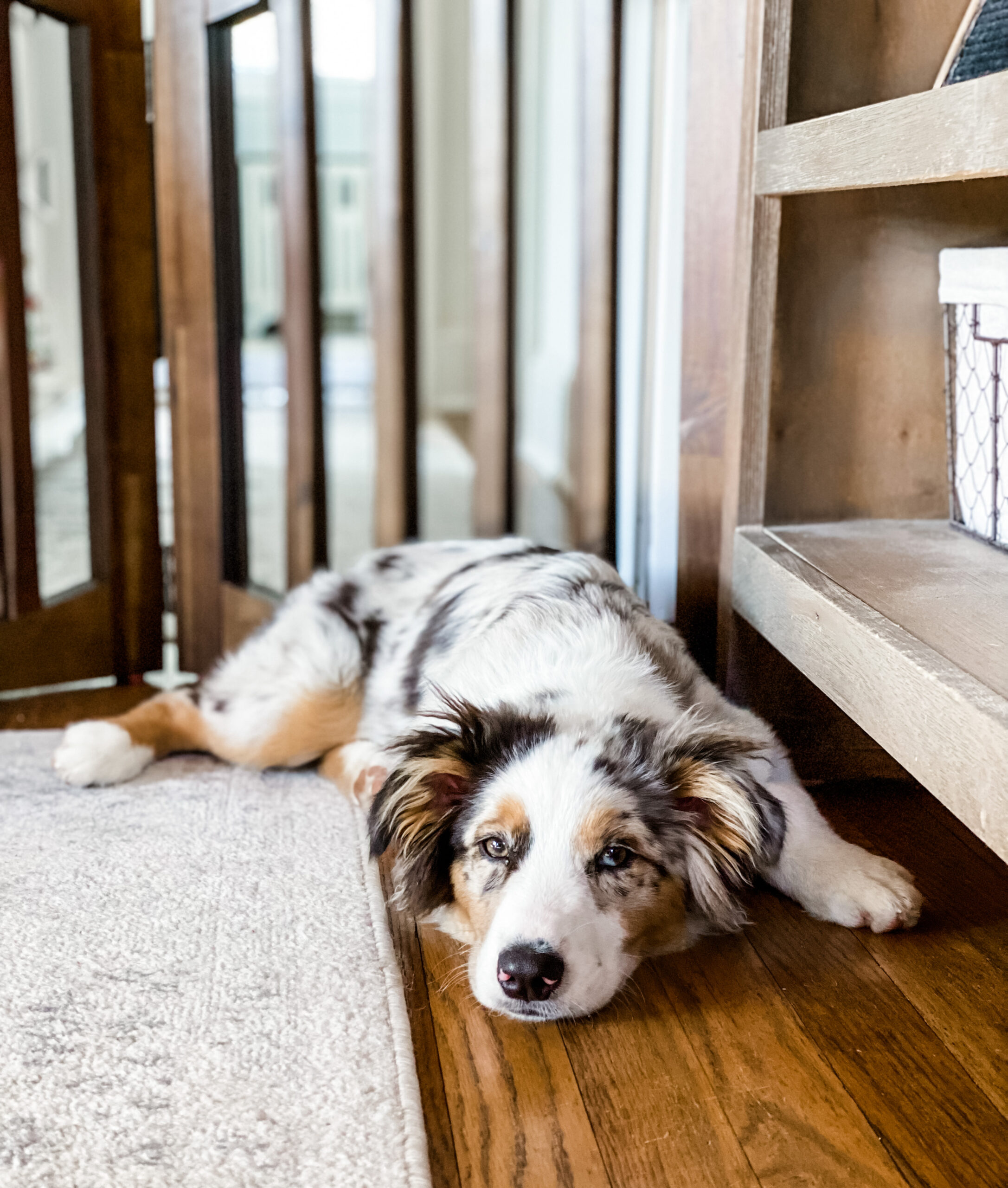
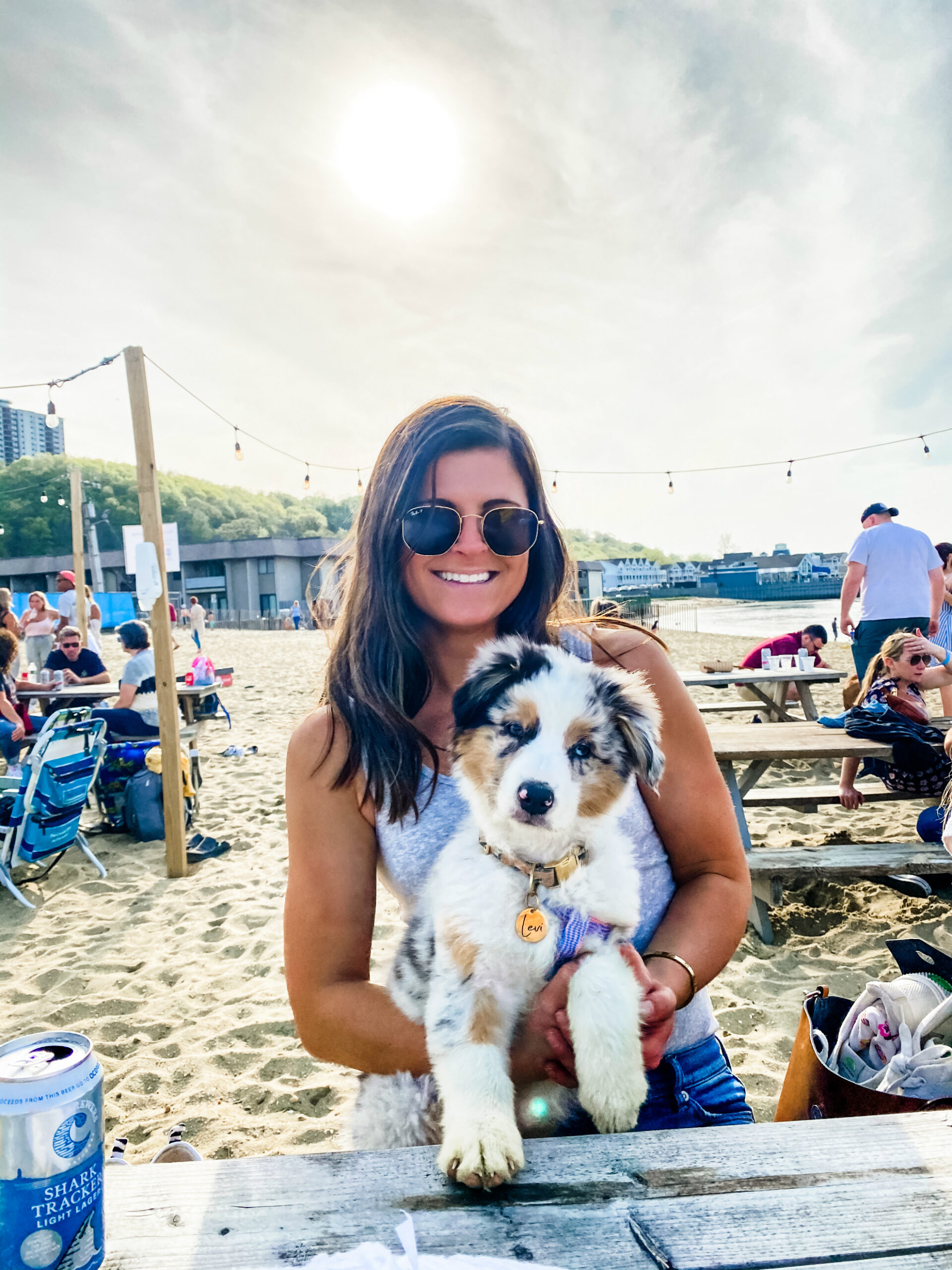

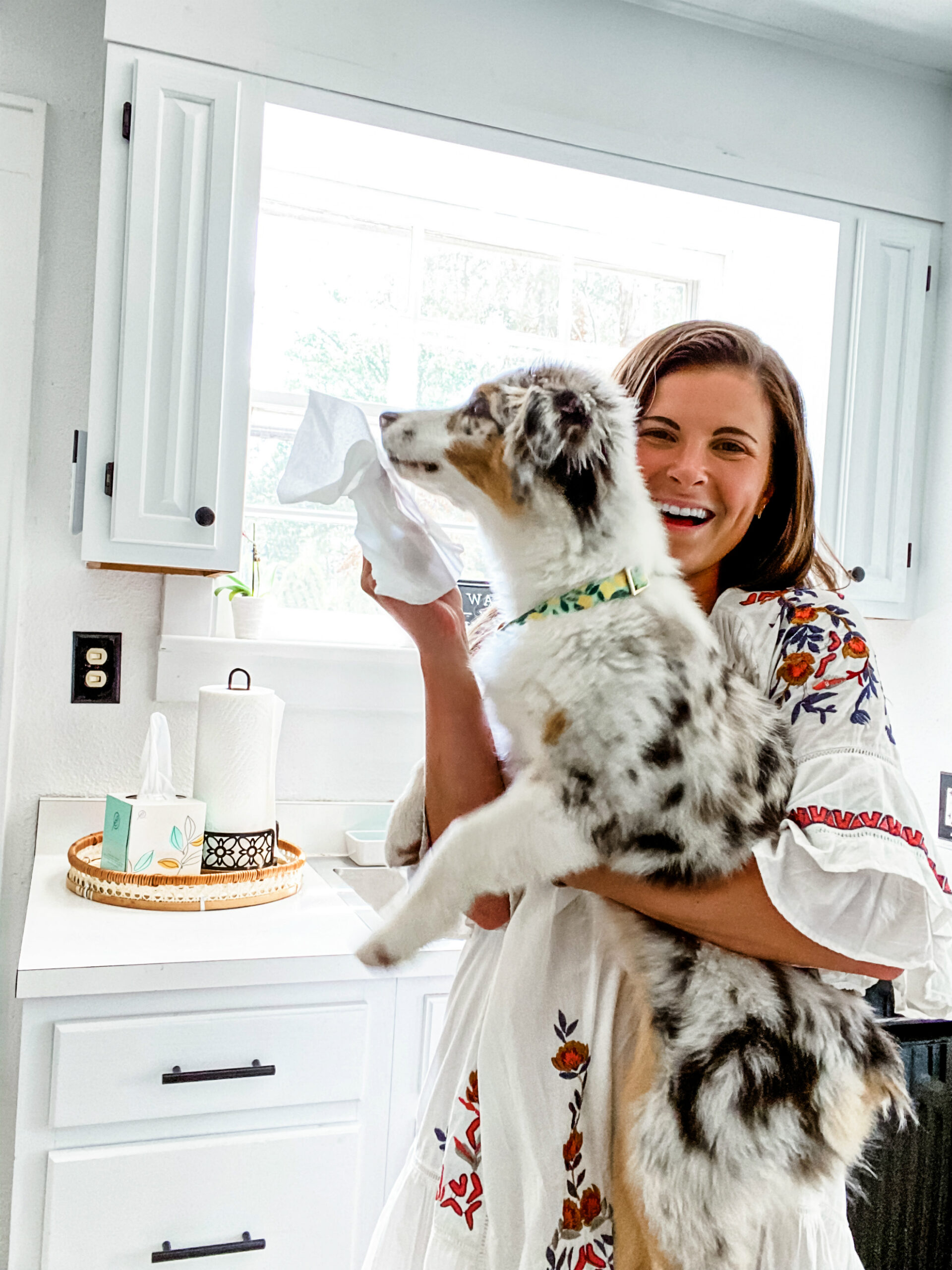
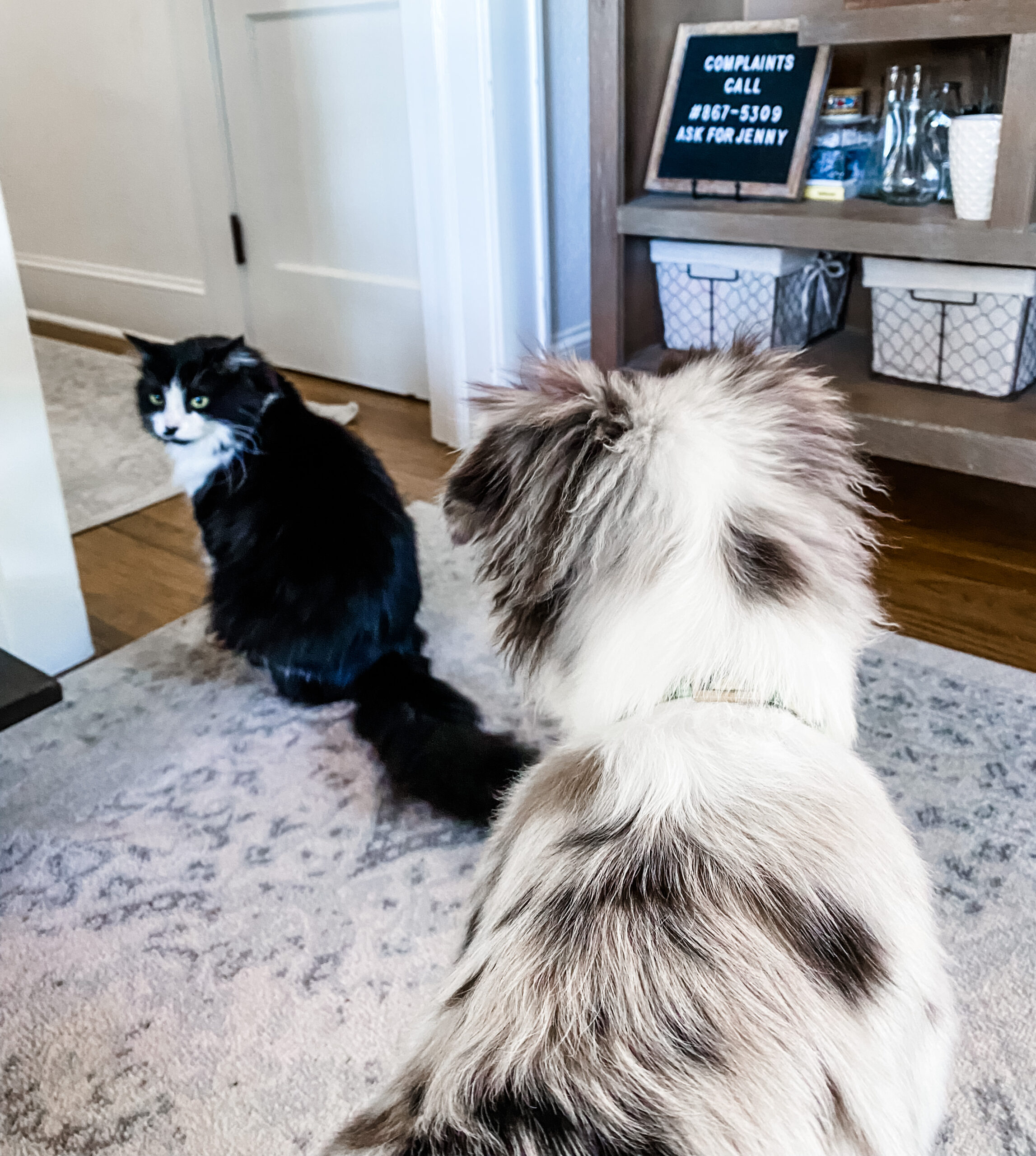
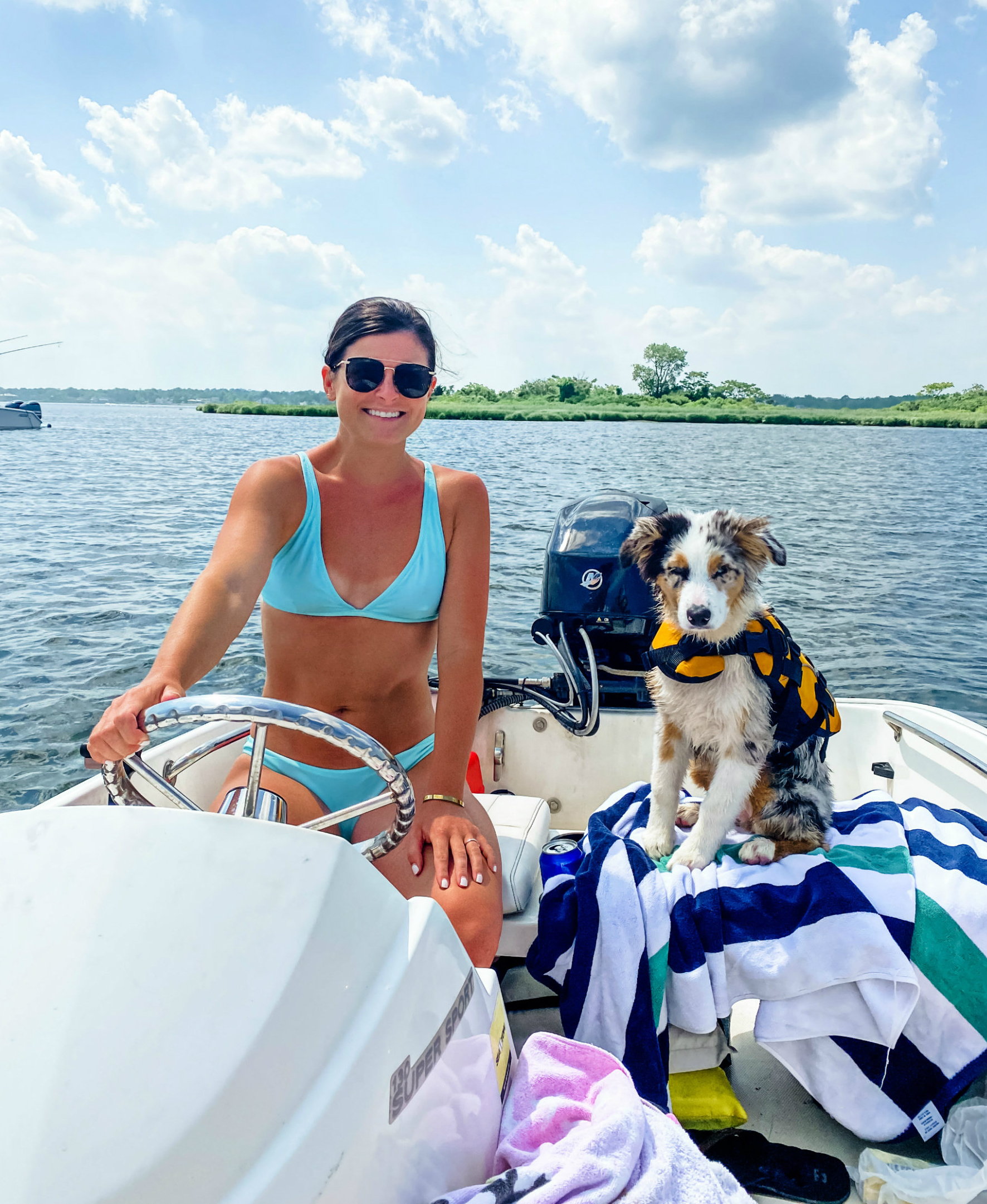
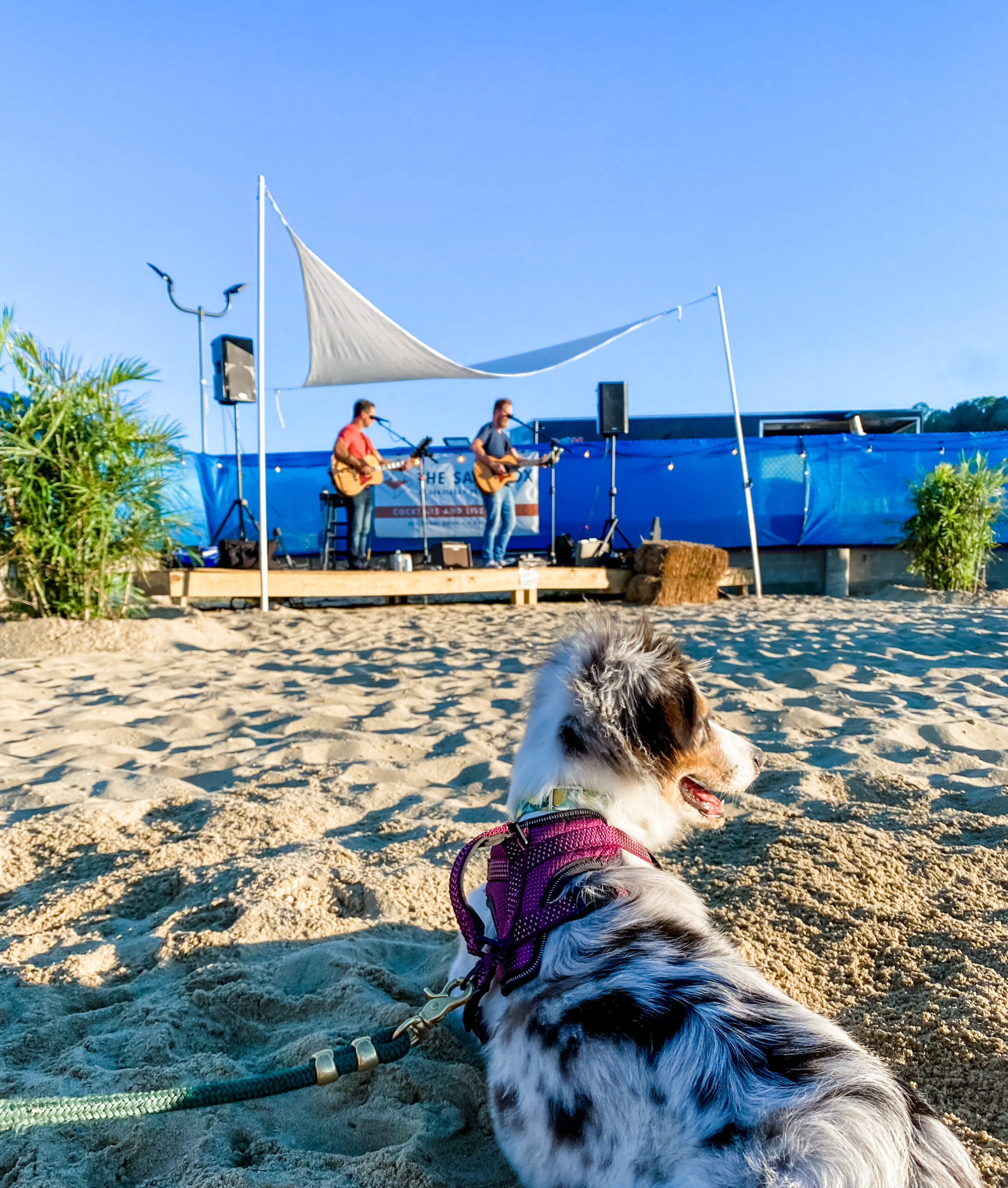
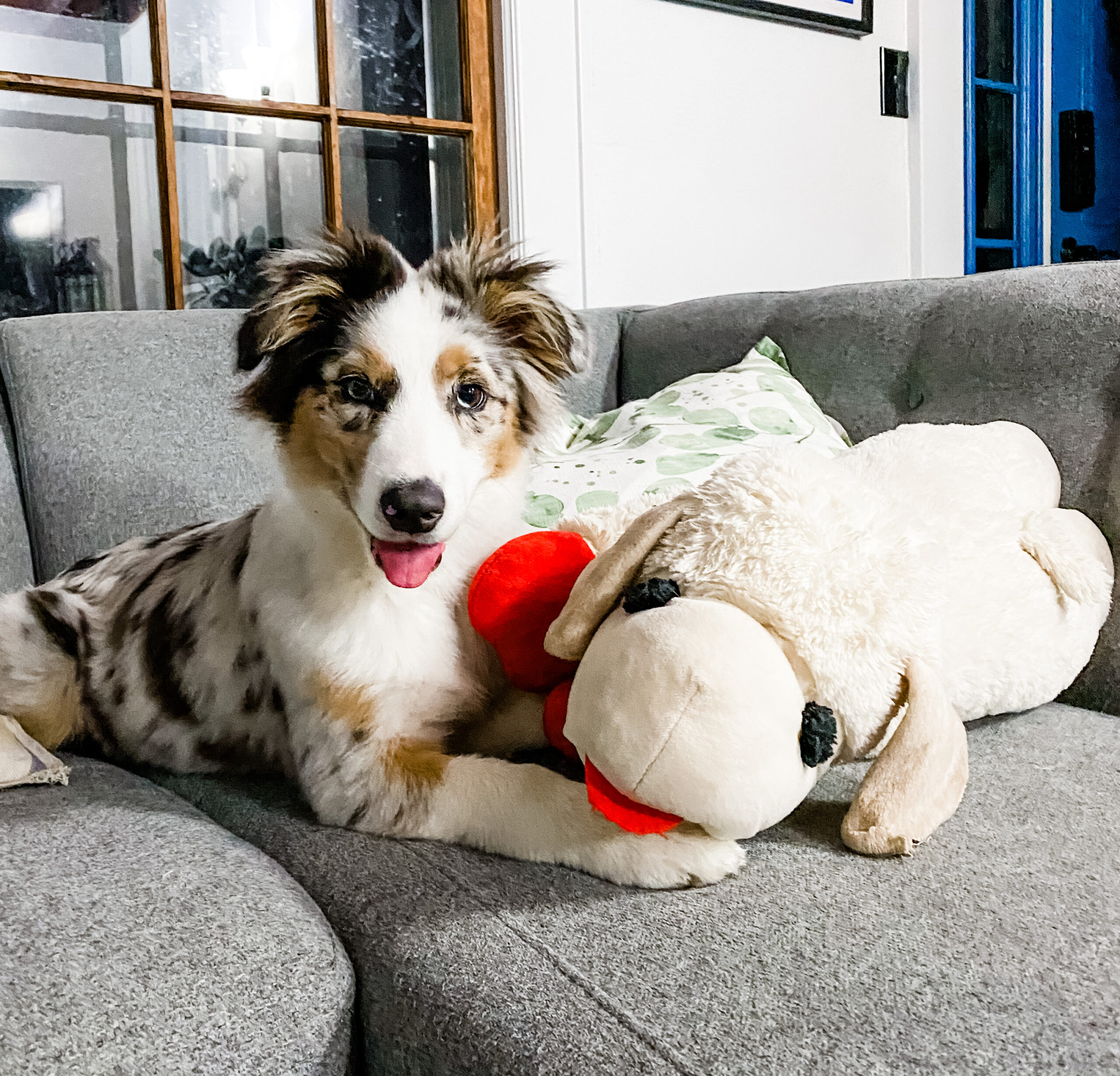

While we don’t have a dog, this was such an interesting post! Your new puppy is beautiful and it looks like you are doing your job learning to be great puppy parents!
http://www.chezmireillefashiontravelmom.com
She’s such a good dog and it’s nice you are settling into a routine with her! I knew the potty training would be difficult to master as a first time dog owner so we were thrilled when the dog we liked at the shelter was already potty trained, haha! He didn’t know a lot of commands though so we had fun teaching him some new ones but as a Shih Tzu he can be a bit uninterested in training sometimes, ha!
Hope you are having a good week 🙂
You are a glowing puppy mom, Tilden! She is so beautiful. I am dying over the photo of Levi in her life jacket! Raising a puppy is really hard work which is why we don’t have dogs! I have my hands full with two kids. This was a really great post for anyone thinking about getting a dog. Thanks for sharing and linking with me!
Shelbee
http://www.shelbeeontheedge.com
As a Aussie owner myself I have had to “save “ my dog several times from chocolate… grapes… and even another one of my dogs medicine . Long story short keep hydrogen peroxide in your medicine cabinet and a large syringe in case of ingesting an unwanted substance.
2 tablespoons of hydrogen peroxide forced down your dogs throat repeatedly until they regurgitate will save their life . Without a large vet bill.
Great tip! We started having it in our medicine cabinet on standby (knock-on-wood haven’t had to use it yet) but it’s a big relief just knowing it’s there xx
Thanks for told, we just got our little guy he’s just 9 weeks old. This is 4 herding dog we had, but first Aussie. 2 have crossed rainbow bridge, and our third a heeler/lab mix really missed having a companion, so we got her this little guy. Get a wireless fence, they are so worth it with herders, even if you have a regular fence. After training our old boy with one, he got to point where we didn’t need it. Now our 3 year old lab/heeler still tests it at times. She is to smart for her own good